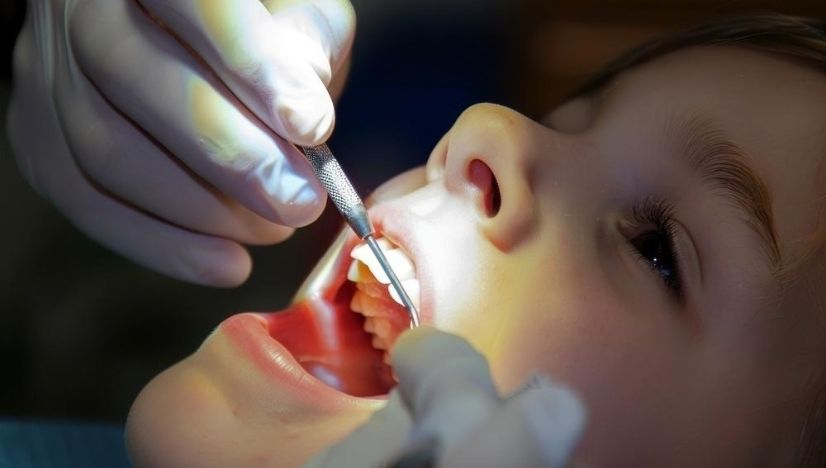Fluoride Treatments For Kids: How Often Do They Need Them?

Most parents place a high premium on ensuring their children’s teeth are healthy and cavities-free. In children’s dentistry, fluoride treatments are essential because they strengthen baby teeth and provide protection against tooth decay. However, how frequently should your youngster be treated with fluoride?
The science underlying fluoride, the variables that affect its frequency, and how to make sure your child receives the greatest treatment are all covered in today’s blog.
Fluoride and Its Benefits
Fluoride is a naturally occurring mineral found in water, soil, and certain foods. It plays a critical role in oral health by strengthening tooth enamel and preventing cavities, making it an essential element in children’s dentistry :
- Strengthening Tooth Enamel: Fluoride helps repair weakened enamel by remineralizing it.
- Preventing Cavities: It creates a protective barrier against acids and bacteria.
- Reversing Early Decay: In its early stages, tooth decay can be reversed with regular fluoride exposure.
Types of Fluoride Treatments for Kids
There are several ways children can benefit from fluoride, including:
- Topical Fluoride Treatments:
- These are professionally applied treatments, such as gels, foams, or varnishes, administered during dental visits.
- Often recommended every 3-6 months, depending on the child’s risk level for cavities.
- Fluoride Toothpaste:
- Brushing with fluoride toothpaste twice daily is a foundational practice.
- The American Dental Association (ADA) recommends a rice-sized smear for children under three and a pea-sized amount for older kids.
- Fluoridated Water:
- Many communities add fluoride to public water systems, providing consistent exposure to strengthen teeth.
- Many communities add fluoride to public water systems, providing consistent exposure to strengthen teeth.
- Fluoride Rinses:
- Over-the-counter fluoride rinses can be an additional tool for older children with a higher risk of decay.
Factors That Influence Fluoride Treatment Frequency
The ideal schedule for fluoride treatments depends on several factors, such as:
- Age: Younger children with developing teeth often benefit from regular fluoride exposure to build strong enamel.
- Cavity Risk: Children with a history of cavities or poor oral hygiene may need more frequent treatments.
- Diet: Diets high in sugary or acidic foods increase the risk of tooth decay, making fluoride treatments more crucial.
- Access to Fluoride: If your child doesn’t drink fluoridated water, the dentist may recommend additional treatments.
Signs Your Child May Need More Frequent Fluoride Treatments
If you notice any of the following, the dentist might suggest increasing fluoride exposure:
- Frequent cavities despite regular brushing and flossing.
- White spots or early signs of decay on teeth.
- Complaints of sensitivity to hot or cold foods and drinks.
How Fluoride Treatments Fit Into Your Kid’s Routine Dental Care?
Fluoride treatments are often administered during routine dental cleanings, typically every six months. The process is quick, painless, and safe:
- The dentist applies a fluoride gel, foam, or varnish to your child’s teeth.
- It’s left in place for a few minutes to allow absorption.
- Your child is instructed to avoid eating or drinking for 30 minutes to maximize the treatment’s effectiveness.
Common Myths About Fluoride Treatments
There’s a lot of misinformation about fluoride. Let’s debunk some common myths:
- Myth: Fluoride treatments aren’t necessary if you brush regularly.
- Truth: While brushing is crucial, professional fluoride treatments provide extra protection, especially for high-risk kids.
- Truth: While brushing is crucial, professional fluoride treatments provide extra protection, especially for high-risk kids.
- Myth: Too much fluoride is harmful.
- Truth: Overexposure, or fluorosis, is rare and typically occurs from swallowing large amounts of fluoride toothpaste. Professional treatments are carefully controlled to avoid this.
Tips for Parents To Maximize Fluoride Benefits
- Start Early: Introduce fluoride toothpaste as soon as your child’s first tooth appears.
- Regular Check-Ups: Ensure routine dental visits for professional assessments and treatments.
- Balanced Diet: Encourage foods rich in calcium and limit sugary snacks.
- Monitor Brushing: Supervise young children to ensure they use the right amount of fluoride toothpaste and don’t swallow it.
When Should You Worry About Too Much or Too Little Fluoride?
- Too Little Fluoride: Signs of insufficient fluoride include frequent cavities or weak enamel. Discuss with our dentist to adjust the treatment plan.
- Too Much Fluoride: Excessive fluoride can lead to fluorosis, which causes faint white streaks on teeth. This is rare and easily prevented by monitoring toothpaste use and professional applications.
Key Takeaways To Point Out
- Fluoride strengthens enamel, prevents cavities, and reverses early decay.
- Most kids benefit from professional fluoride treatments every 6 months.
- Factors like age, cavity risk, and access to fluoridated water influence treatment frequency.
- Professional treatments are safe, quick, and an essential part of preventive care.
- Monitor your child’s fluoride intake to balance its benefits and avoid overexposure.
In the end, fluoride treatments are an indispensable part of maintaining your child’s oral health. While brushing and flossing are essential, fluoride offers that extra layer of protection against cavities and decay.
Consulting with our kid’s dentist and tailoring a fluoride schedule to their needs will ensure their teeth remain strong and healthy. When it comes to your child’s smile, prevention is always better than cure—so don’t underestimate the power of fluoride treatments!

